
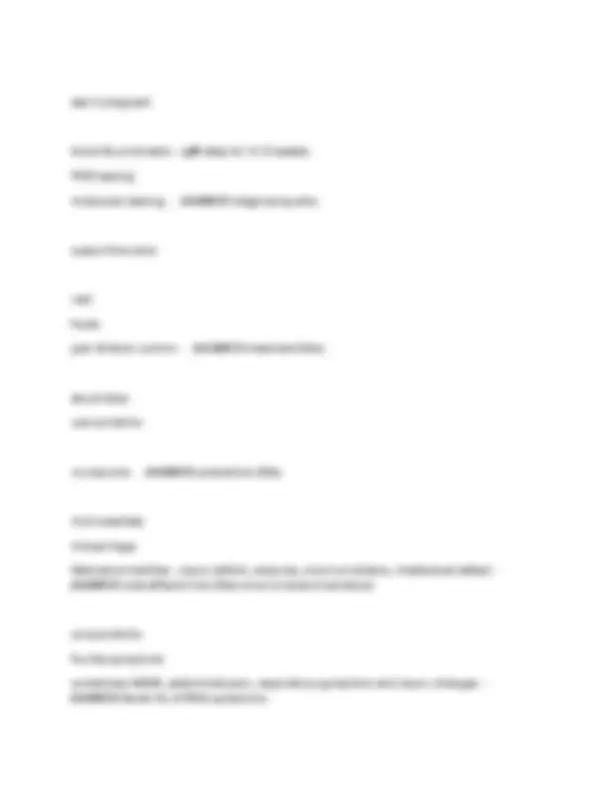
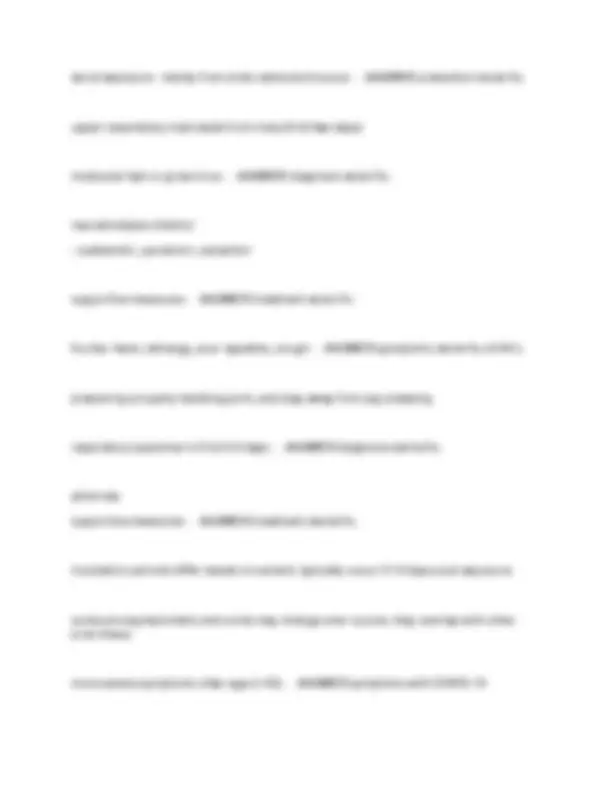
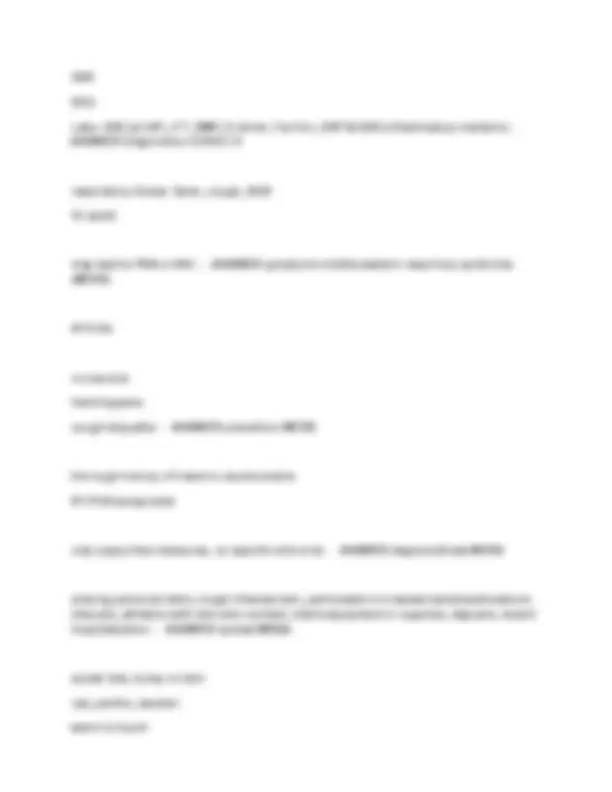
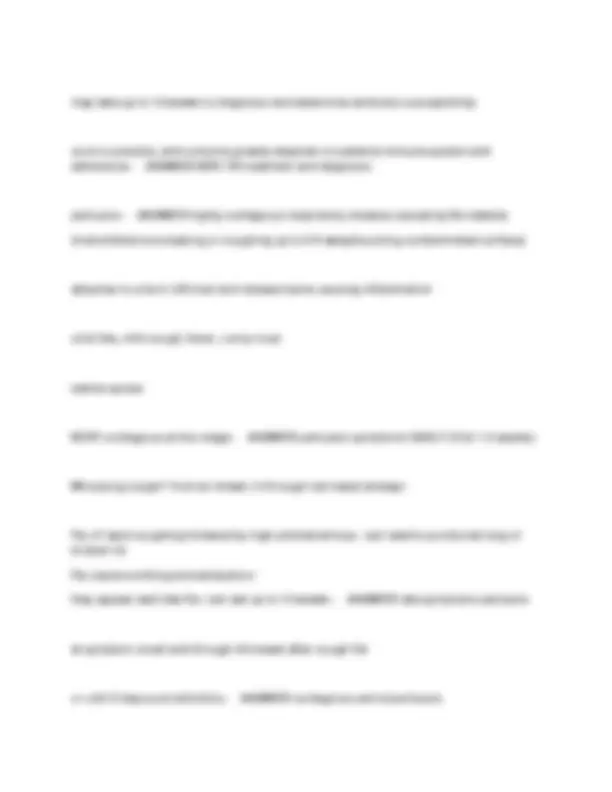
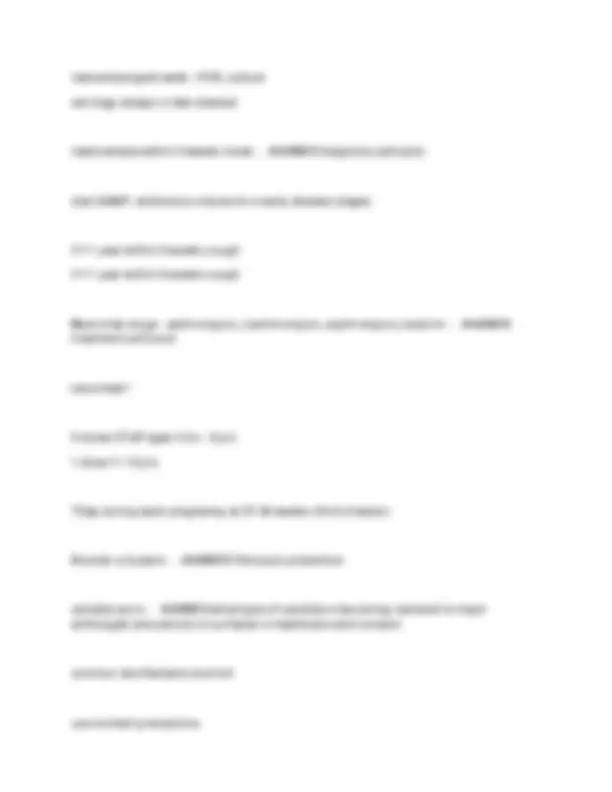
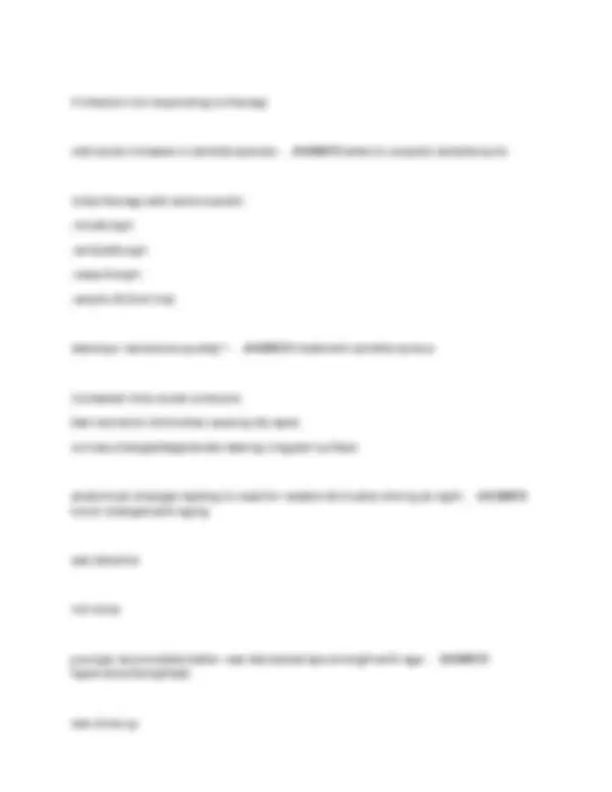
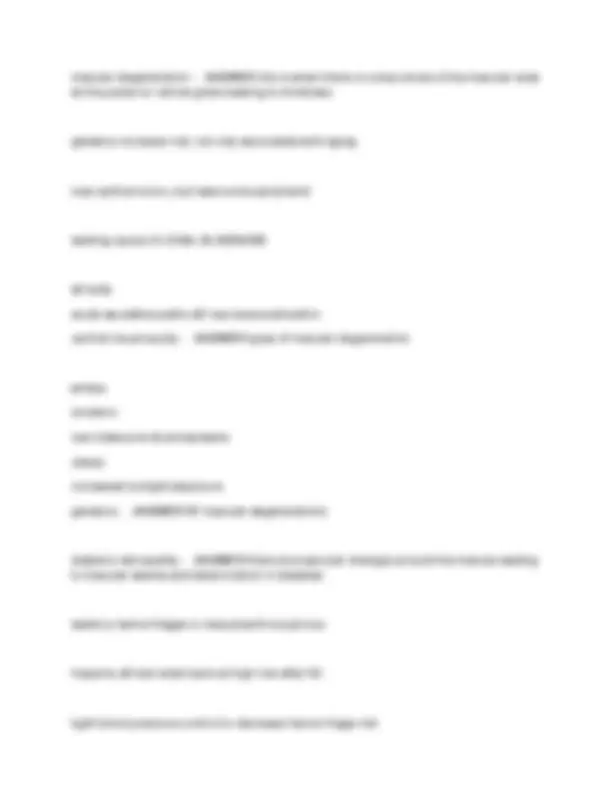
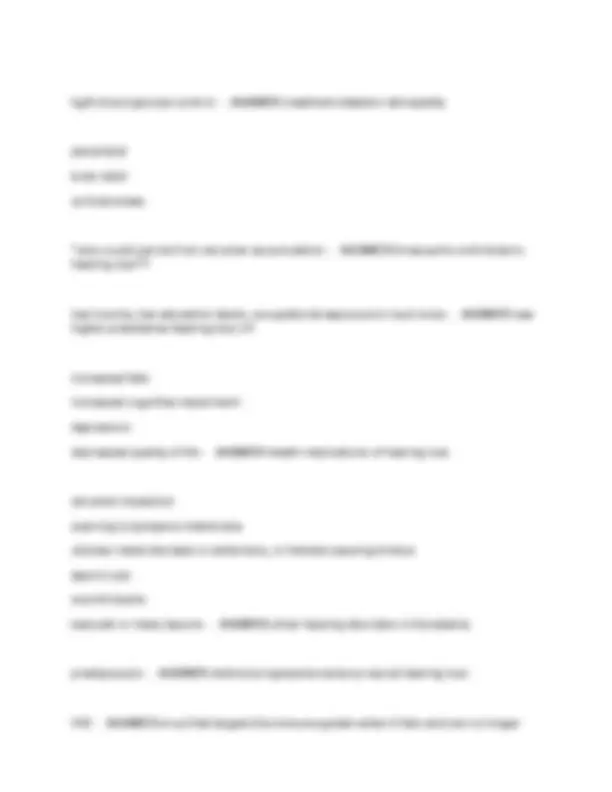
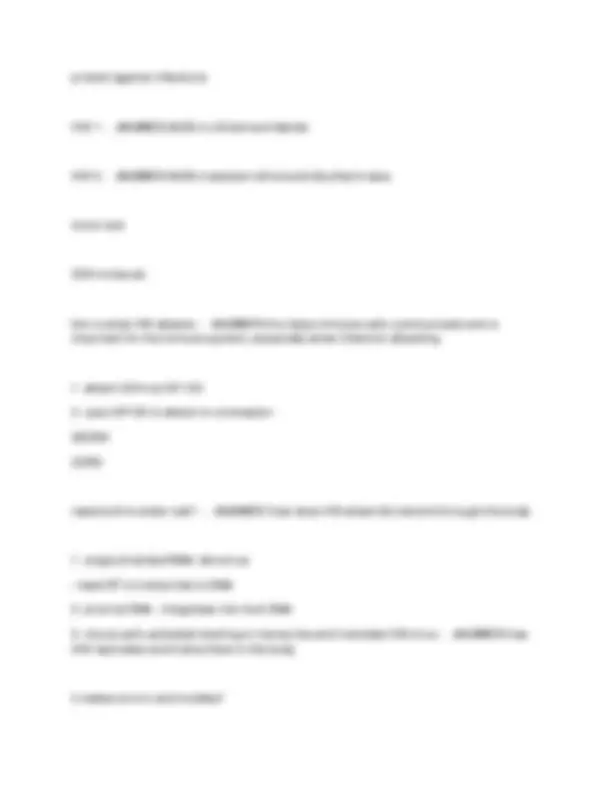
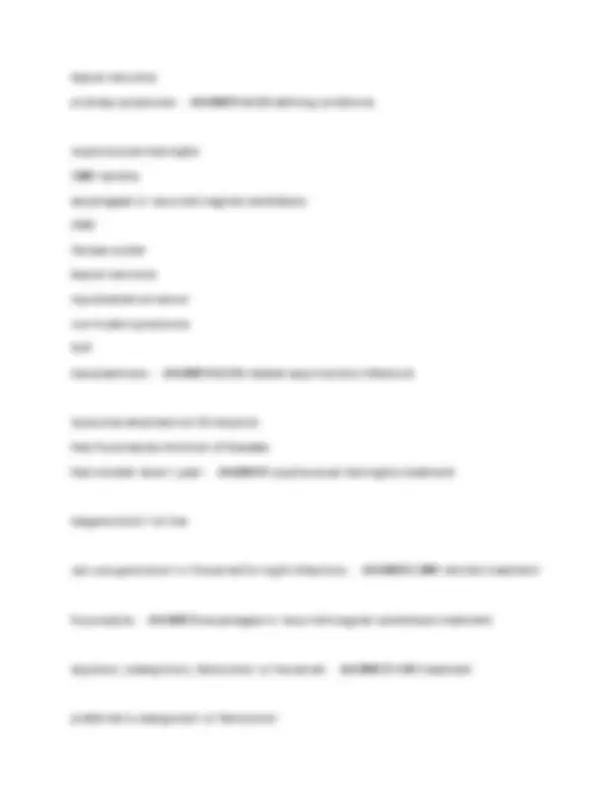
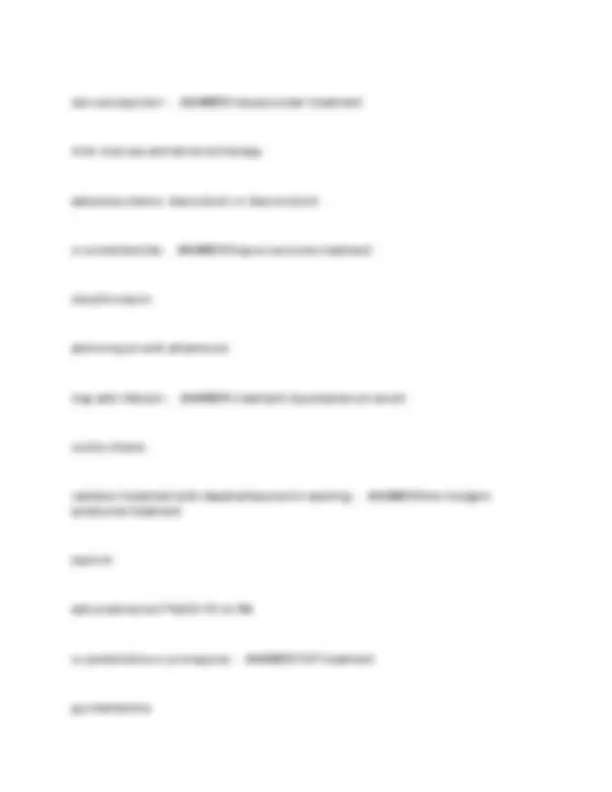
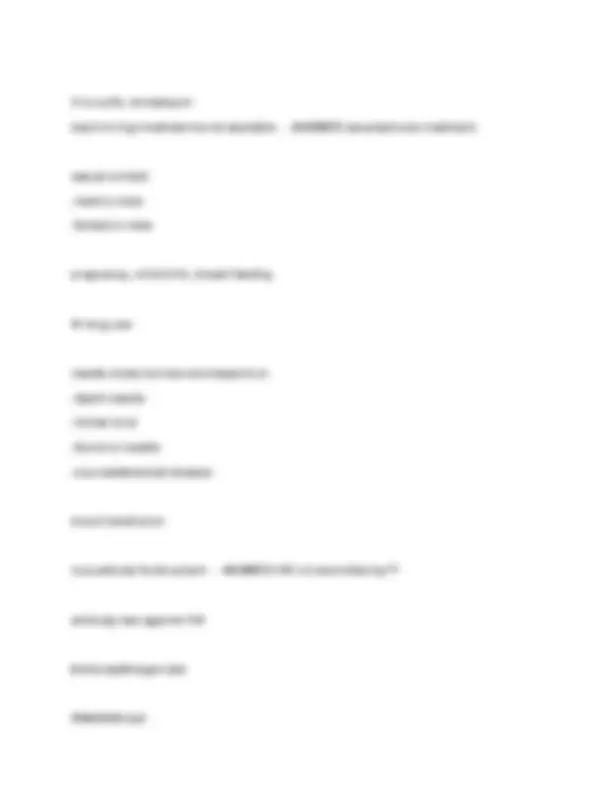
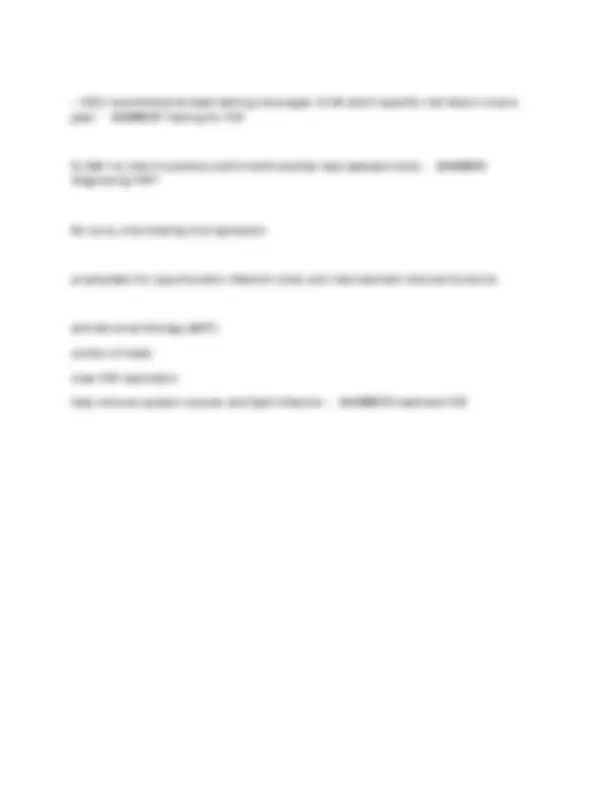


Study with the several resources on Docsity

Earn points by helping other students or get them with a premium plan


Prepare for your exams
Study with the several resources on Docsity

Earn points to download
Earn points by helping other students or get them with a premium plan
Community
Ask the community for help and clear up your study doubts
Discover the best universities in your country according to Docsity users
Free resources
Download our free guides on studying techniques, anxiety management strategies, and thesis advice from Docsity tutors
A comprehensive overview of emerging and re-emerging diseases, covering their causes, symptoms, transmission, diagnosis, treatment, and prevention. It includes detailed information on various diseases such as west nile virus, zika virus, avian flu, swine flu, covid-19, mers, mrsa, ebola, tb, pertussis, and candida auris. The document also includes exercises and solutions, making it a valuable resource for students studying infectious diseases.
Typology: Exams
1 / 21

This page cannot be seen from the preview
Don't miss anything!














emerging disease -during the last 2 decades & threaten to increase in the future ANSWER diseases whose incidence in humans has increased
reemerging diseases -developed resistance and are appearing in epidemic form ANSWER diseases previously controlled by antibiotics but
unplanned & underplanned urbanizationovercrowding/rapid growth poor sanitation inadequate public health infrastructureantibiotic resistance increased exposure rapid international travelimmunosupressed - ANSWER factors responsible to emerging and reemerging diseases animals --> humans increased transmission s/t to increased close contact of animal and human deforestation, climate change, large scale farming, food processing, change in societalnorms, decreased vaccinations, increased travel and trade - ANSWER zoonotic spread- what is it? / how it happens?
from mosquito bite, blood transfusions, solid organ transplant, breast milk try to avoid bites - long sleeve shirt/pants, mosquito repellant -transmission ANSWER west nile virus
most asymptomatic febrile illness w/ HA, myalgias, GI upset, transient rash, chills 1% neuro disease- menigitis/encephalitis (seizures, AMS, weakness, vision changes,stiff neck) - ANSWER symptoms west nile virus
usually nonspecific viral illness see 4x IgM assay in serum supportive measures steroids + antivirals (ribavirin) if neuro disorder - ANSWER treatment west nile virus asymptomatic or mild fever, rash, HA, myalgia/arthralgia, conjunctivitis last several days- week - ANSWER symptoms zika virus recent travel? sex with traveler? - spread from mosquito bite, blood, mother - baby orsex
avoid exposure - mainly from birds saliva and mucus - ANSWER prevention avian flu upper respiratory tract swab from nose (first few days) molecular test or grow virus - ANSWER diagnosis avian flu neuramindase inhibitor
more severe symptoms older age (> 40) - ANSWER symptoms with COVID-
Labs- CBC w/ diff, LFT, BMP, D-dimer, Ferritin, CRP & ESR (inflammatory markers) -ANSWER Diagnostics COVID-
respiratory illness: fever, cough, SOBGI upset
may lead to PNA or AKI -(MERS) ANSWER symptoms middle eastern respirtory syndrome
4/10 die no vaccinehand hygiene cough etiquette - ANSWER prevention MERS thorough history of travel to saudia arabia RT-PCR assay tests only supportive measures, no specific anti-viral - ANSWER dagnosis/treat MERS sharing personal items, tough infected skin, participate in crowded activities/locations(like jail), athletics with skin-skin contact, share equipment or supplies, daycare, recent hospitalization - ANSWER spread MRSA spider bite, bump on skin red, painful, swollenwarm to touch
early - ELISA, IgM Elisa, PCR, virus isolation
-can have antibodies up to 10 years -late stage/in recovery: IgM & IgG ANSWER diagnosis Ebola no vaccine supportive measures only - ANSWER treatment Ebola do not complete full TB treatment wrong treatment prescribed drugs for proper treatment not available drugs poor quality - ANSWER causes drug resistant TB via droplet! cough, sneezing, singing mainly affect lungs, but also brain, kidneys and spine -effects what ANSWER TB transmission /
multi DR-TB -isoniazid & rifampin ANSWER this is TB caused by bacteria that is resistant to at least
Extensively DR-TB (XDR-TB) -PLUS any fluroquinolone & at least 1 of 3 injectable 2nd line drugs (amikacin, ANSWER rare Tb that is resistant to isoniazid & rifampin kanamycin, capreomycin) ONLY expensive 2nd line options available & have higher AE
may take up to 16 weeks to diagnosis and determine antibiotic susceptibility cure is possible, and outcome greatly depends on patients immune system andadherence - ANSWER XDR-TB treatment and diagnosis
pertussis - ANSWER highly contagious respiratory disease caused by Bordatella (transmitted via sneezing or coughing up to 6 ft away/touching contaminated surface) attaches to cilia in UR tract and release toxins causing inflammation cold-like, mild cough, fever, runny nose babies apnea VERY contagious at this stage - ANSWER pertussis symptoms EARLY (first 1-2 weeks) Whooping cough!! from air drawn in through narrowed airways fits of rapid coughing followed by high-pitched whoop - can lead to punctured lung orbroken rib fits cause vomiting and exhaustionthey appear well b/w fits- can last up to 10 weeks - ANSWER late symptoms pertussis
at symptom onset and through 3rd week after cough fits or until 5 days post atibiotics - ANSWER contagious period pertussis
if infection not responding to therapy odd acute increase in candida species - ANSWER when to suspect candida auris initial therapy with echinocandin -micafungin -anidulafungin-caspofungin -ampho B (2nd line) develops resistance quickly!! - ANSWER treatment candida aureus increased intra-ocular pressuretear secretion diminishes causing dry eyes cornea changes/degenerate leaving irregular surface anatomical changes leading to need for readers & trouble driving at night -vision changes with aging ANSWER
see distance not close younger accomodate better- see decreased eye strength with age -hyperobia (farsighted) ANSWER
see close up
hard to see fair crystalline lens increased in size with age, old lens fibers accumulate and makes it hardto see far away - ANSWER myopia (nearsighted)
this is the distance one can clearly recede with age inability to focus near vision so ~ 45 reading close up is hard - ANSWER presbyopia cataractsdiabetic retinopathy open angle glaucoma closed anglelate age macular degeneration
want to build vision screening into medicare visit!! -eye diseases in elderly- list from most - least prevalent ANSWER most common causes of
cataracts -decade of life ANSWER opacities (cloudiness) in the lens that increases with each
painless in both eyes night driving/seeing road signsreading small print - ANSWER these are hard with cataracts
glasses
macular degeneration -at the posterior retinal globe leading to blindness ANSWER this is when there is compromise of the macular area
genetics increase risk; not only associated with aging lose central vision, but have some peripheral leading cause of LEGAL BLINDNESS atrophy acute exudative patho d/t neurovascularizationcentral visual acuity - ANSWER types of macular degeneration
whitessmokers low intake zinc & antioxidants obeseincreased sunlight exposure genetics - ANSWER RF macular degenerations diabetic retinopathy -to macular edema and deterioration in diabetes ANSWER there are vascular changes around the macula leading
leads to hemorrhages in macula with visual loss hispanic african americans at high risk after 50 tight blood pressure control to decrease hemorrhage risk
tight blood glucose control - ANSWER treatment diabetic retinopathy peripheral brain stemcortical areas
low income, low education levels, occupational exposure to loud noise -higher prevalence hearing loss in? ANSWER see
increased fallsincreased cognitive impairment depression decreased quality of life - ANSWER health implications of hearing loss cerumen impaction scarring to tympanic membraneototoxic meds like lasix or antibiotics, or herbals causing tinnitus aspirin usesound trauma vascular or mass lesions - ANSWER other hearing disorders in the elderly presbyscusis - ANSWER distinct progressive sensory neural hearing loss HIV - ANSWER virus that targets the immune system when it fails and can no longer
therefore it will make different strains that behave slightly different and target differenthost cells - ANSWER how does HIV replicate/behave
occur within 2-4 wks primary infection flu like S & S immune system launch counter attack and will be better in 12 weeks, but can still detectHIV - ANSWER ACUTE phase HIV
last 2-10 years asymptomatic, but virus still hurting immune system T cells are low, but virus is high (>500) s&s: fatigue, low grade fever, night sweats, or lymphadenopathy -phase HIV ANSWER CHRONIC
T cells < 500 at risk opportunistic infections - ANSWER SYMPTOMATIC phase HIV swollen lymph nodes candidiasisoral hairy leukoplakia fever night sweats
chronic diarrhea constant fatigue weight loss - ANSWER HIV symptoms with T cells 200- HIV --> AIDS high levels HIV in blood encephalitis meningitis retinitisPJP TB lung tumorsskin tumors Esophagitis chronic diarrheaGI tumors -- immune system severely compromised! -200? ANSWER what happens when T cells <
NO - have rest of your life! - ANSWER can AIDS be cured? recurrent bacterial PNA PJPCMV Candidiasis of the esophagus
can use acyclovir - ANSWER herpes zoster treatment mild- mod use antiretroviral therapy advances chemo- doxorubicin or daunorubicin or pomalidomide - ANSWER Kaposi sarcoma treatment clarythromycin azithromycin with ethambutol may add rifabutin - ANSWER treatment mycobacterium avium combo chemo radiation treatment with dexamethasone for swelling -lymphoma treatment ANSWER Non-Hodgkin
bactrim add prednisone if PaO2< 70 on RA or pentamidine or primaquine - ANSWER PJP treatment pyrimethamine
if no sulfa- clindamycin bactrim if pyrimethamine not available - ANSWER toxoplasmosis treatment sexual contact-male to male -female to male pregnancy, child birth, breast feeding IV drug use needle sticks but less and depend on: -depth needle-hollow bore -blood on needle -source/advanced disease blood transfusion mucus/body fluids splash - ANSWER HIV is transmitted by?? antibody test against HIV Antibody/Antigen test RNA/DNA test